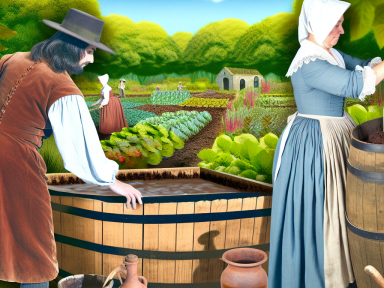Understanding Fermentation Fertilizers
Fermentation fertilizers, often overlooked in modern gardening, are potent sources of nutrition for plants. These fertilizers are created through the breakdown of organic materials by microorganisms, resulting in a nutrient-rich solution that is beneficial for plant growth. Below, you will find specific methods and recipes to create these forgotten gems.
Benefits of Fermentation Fertilizers
- Enhanced Nutrient Availability: Fermentation breaks down complex organic materials, making nutrients more readily available for plants.
- Improved Soil Health: The probiotics from fermented solutions enrich soil microbiota.
- Cost-Effective: Many fermentation fertilizers can be made using kitchen scraps and garden waste.
DIY Fermentation Fertilizer Recipes
Fermented Plant Juice (FPJ)
Fermented Plant Juice, commonly known as FPJ, uses the natural juices of plants and fruits to create a nutrient-dense liquid fertilizer.
Ingredients:
- 1 kg fresh plant material (e.g., comfrey leaves, stinging nettle, or fruit scraps)
- 500 g brown sugar or molasses
Instructions:
- Chop the plant material into small pieces.
- Mix the plant material thoroughly with brown sugar or molasses in a non-metallic container.
- Cover the container loosely with a cloth to allow airflow and let it sit in a cool, dark place for 5-7 days.
- Strain the liquid and store it in a sealed bottle. Dilute the FPJ in a ratio of 1:500 with water before applying to plants.
Fish Amino Acid (FAA)
Fish Amino Acid is an excellent nitrogen-rich fertilizer made from the fermentation of fish waste.
Ingredients:
- 1 kg fish waste (heads, bones, entrails)
- 500 g brown sugar or molasses
- A non-metallic container
Instructions:
- Clean the fish waste thoroughly and chop into smaller pieces.
- Mix the fish waste with brown sugar or molasses until evenly coated.
- Place the mixture into the non-metallic container. Cover it loosely to allow gases to escape.
- Store in a cool, dark place for 2-3 months, stirring occasionally. Once the fish has fully broken down and released its juices, strain and store the liquid in a sealed bottle.
- Dilute FAA to a ratio of 1:1000 with water before application.
Fermented Fruit Scrap Fertilizer
Using fruit scraps to create a fermented fertilizer is a sustainable way to repurpose kitchen waste.
Ingredients:
- 2 kg mixed fruit scraps (e.g., banana peels, apple cores)
- 1 kg brown sugar or molasses
- A non-metallic container
Instructions:
- Chop the fruit scraps into small pieces.
- Layer the fruit scraps with brown sugar or molasses in the container, mixing each layer well.
- Cover with a cloth and let it ferment in a cool, dark place for 4-6 weeks.
- Stir the mixture occasionally to ensure uniform fermentation. After the fermentation period, strain the liquid and store it in a sealed container.
- Dilute to a ratio of 1:500 with water before using as a foliar spray or soil drench.
Application Tips
- Timing: Apply fermentation fertilizers during the early morning or late afternoon to prevent nutrient loss through evaporation.
- Frequency: Use fermented fertilizers once every 2-4 weeks depending on the plant’s needs.
- Observation: Monitor plants for any signs of nutrient deficiency or excess and adjust the dilution accordingly.
Harnessing the power of fermentation fertilizers can bring new vitality to your garden. The natural, nutrient-rich solutions not only promote healthier plants but also contribute to sustainable gardening practices.



GIPHY App Key not set. Please check settings